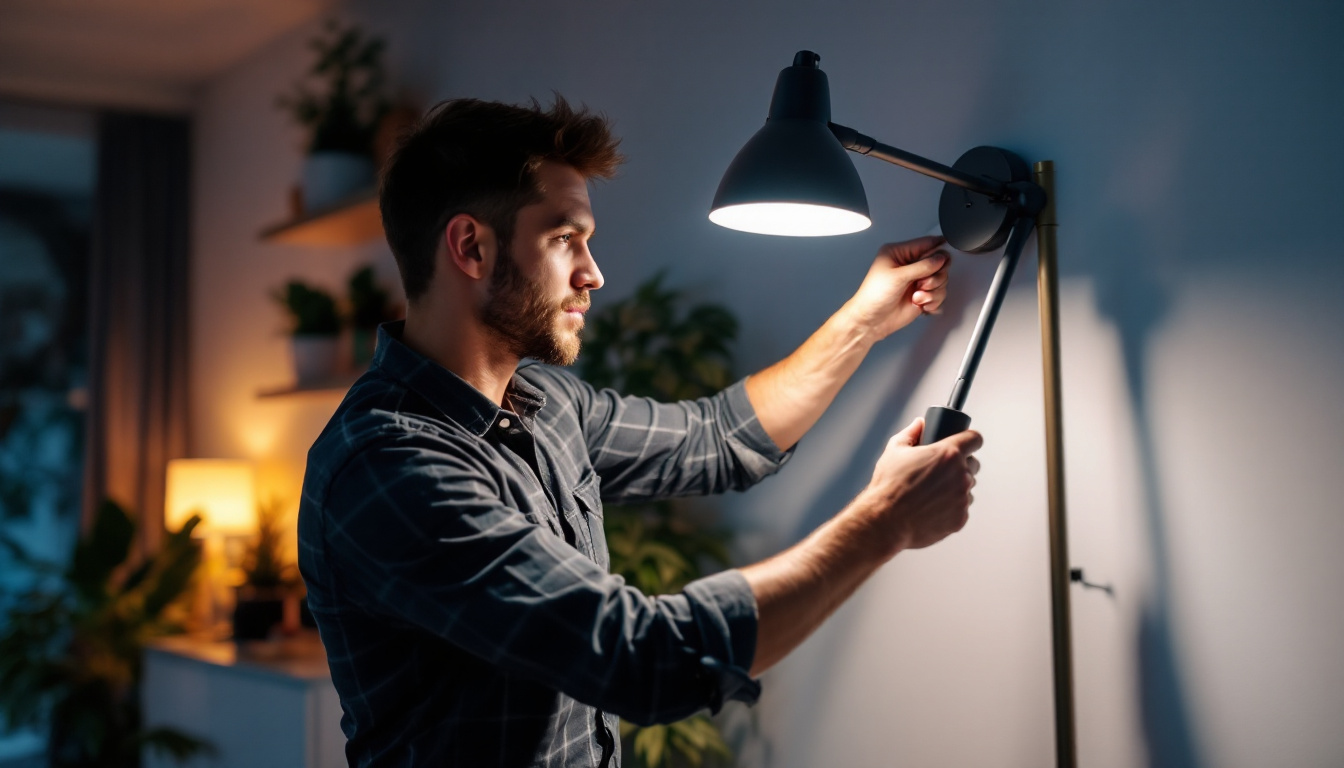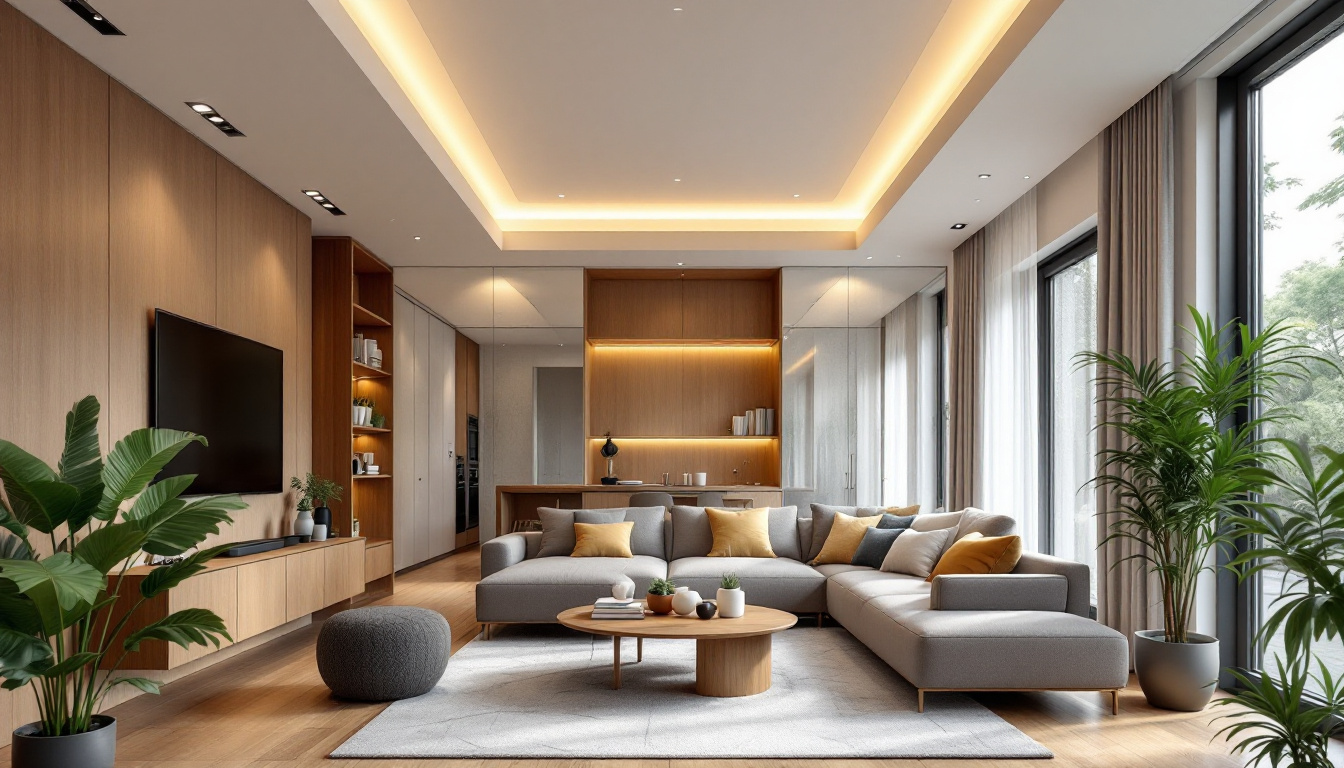
In the ever-evolving world of lighting solutions, LED technology has emerged as a game-changer. Among the various options available, 4-foot LED lamps stand out for their versatility and efficiency. For lighting contractors, mastering the use of these lamps can lead to enhanced project outcomes and satisfied clients. This article delves into the essentials of LED 4-foot lamps, offering insights on their benefits, installation techniques, and best practices for contractors.
LED 4-foot lamps are designed to replace traditional fluorescent tubes, providing a more energy-efficient and longer-lasting lighting solution. These lamps are commonly used in commercial and industrial settings, such as warehouses, offices, and retail spaces. Their length makes them an ideal choice for fixtures that accommodate standard tube sizes, allowing for a straightforward retrofit.
The advantages of LED technology are numerous. First and foremost, LED lamps consume significantly less energy compared to their fluorescent counterparts. This reduction in energy usage translates into lower electricity bills for businesses, making them an attractive option for cost-conscious clients.
Additionally, LED lamps have a longer lifespan, often lasting 25,000 hours or more. This longevity means less frequent replacements, reducing maintenance costs and downtime. Furthermore, LEDs produce less heat, contributing to a cooler environment and reducing the load on HVAC systems. This can be particularly beneficial in settings where temperature control is crucial, such as server rooms or laboratories, where even minor fluctuations in temperature can affect operations.
LED 4-foot lamps can be utilized in a wide range of applications. In commercial settings, they are commonly found in offices, where they provide bright, even lighting conducive to productivity. In industrial environments, these lamps illuminate large spaces, ensuring safety and visibility.
Retail spaces benefit from the crisp, vibrant light that enhances product displays, attracting customers and improving sales. Additionally, warehouses and storage facilities utilize LED lamps for their energy efficiency and ability to illuminate vast areas effectively. Beyond these applications, LED 4-foot lamps are also gaining traction in educational institutions, where they create a well-lit environment that is essential for learning. Classrooms and lecture halls equipped with LED lighting can help reduce eye strain for students and teachers alike, fostering a more conducive atmosphere for education. Moreover, the ability to dim LED lamps allows for flexible lighting solutions that can adapt to different activities, whether it’s a lecture, group work, or presentations.
Installing LED 4-foot lamps can be a straightforward process, but it requires attention to detail to ensure optimal performance and safety. Lighting contractors should familiarize themselves with the specific requirements of the fixtures they are working with, as well as local electrical codes.
Before beginning any installation, it is crucial to assess the existing fixtures and wiring. Contractors should determine whether the current fixtures are compatible with LED lamps or if retrofitting is necessary. This assessment can save time and prevent potential issues during installation.
Gathering the right tools and materials is essential. Contractors should have a multimeter to check voltage and ensure safety, as well as appropriate safety gear, including gloves and goggles. Having all necessary equipment on hand can streamline the installation process. Additionally, it may be beneficial to create a checklist of all required components, including connectors and mounting hardware, to avoid any interruptions during the installation phase.
1. **Turn Off Power**: Safety should always be the top priority. Ensure that the power to the fixture is turned off at the circuit breaker before beginning any work.
2. **Remove Existing Lamps**: Carefully remove any old fluorescent lamps from the fixture. If retrofitting, remove the ballast as well, as it is not needed for LED operation. During this step, it is also wise to inspect the condition of the fixture itself for any signs of wear or damage that may need to be addressed before installing the new lamps.
3. **Install LED Lamps**: Insert the new LED 4-foot lamps into the fixture. If the lamps are direct replacements, they should fit seamlessly. For retrofit installations, follow the manufacturer’s instructions for wiring and positioning. It is important to ensure that the LED lamps are oriented correctly, as improper installation can lead to reduced efficiency or even damage to the fixtures.
4. **Test the Installation**: Once the lamps are installed, turn the power back on and test the lights. Ensure that they illuminate correctly and that there are no flickering or dimming issues. If any problems arise, double-check the connections and the compatibility of the lamps with the existing fixture. Additionally, contractors should take this opportunity to educate clients about the benefits of LED lighting, such as energy efficiency and longevity, which can enhance customer satisfaction and promote future business.
To excel in the field, lighting contractors should adopt best practices that enhance their service quality and client satisfaction. Understanding the nuances of LED technology and staying updated with industry trends is essential for success.
One of the key roles of a lighting contractor is to educate clients about the benefits of LED 4-foot lamps. Many clients may still be unaware of the advantages of switching from traditional lighting to LED. Providing clear, concise information can help clients make informed decisions.
Contractors should highlight energy savings, reduced maintenance costs, and the environmental benefits of using LED technology. Offering case studies or testimonials from previous clients can further reinforce the advantages of LED lamps. Additionally, demonstrating the long lifespan of LED lights compared to incandescent or fluorescent options can be a persuasive point. By explaining how LEDs can last up to 25,000 hours or more, contractors can help clients understand the long-term value of their investment. Furthermore, discussing the versatility of LED lighting, such as its ability to be dimmed or integrated into smart home systems, can also appeal to tech-savvy clients looking for modern solutions.
The lighting industry is constantly evolving, with new technologies and products emerging regularly. Lighting contractors should stay informed about the latest advancements in LED technology, including improvements in color rendering, efficiency, and smart lighting solutions.
Participating in industry conferences, workshops, and training sessions can provide valuable insights and networking opportunities. Joining professional organizations can also help contractors stay connected with peers and access resources that enhance their expertise. Moreover, subscribing to industry publications and following influential figures in the lighting sector on social media can keep contractors informed about emerging trends and innovative products. Engaging in online forums and discussion groups can also foster collaboration and knowledge sharing among professionals, allowing contractors to learn from each other’s experiences and challenges. By being proactive in their education, contractors can position themselves as thought leaders in the lighting industry, ultimately benefiting their clients and their businesses.
While LED 4-foot lamps offer numerous benefits, contractors may encounter challenges during installation or when addressing client concerns. Being prepared to tackle these issues can set a contractor apart from the competition.
Flickering can be a common issue with LED lamps, often caused by incompatible dimmers or voltage fluctuations. Contractors should educate clients on the importance of using compatible dimmers specifically designed for LED technology.
If flickering occurs, it may be necessary to replace existing dimmers or adjust the wiring. Ensuring that the electrical system is stable and properly grounded can also mitigate flickering problems.
Clients may have high expectations regarding the performance and aesthetics of LED lighting. It is essential for contractors to manage these expectations by providing realistic timelines and outcomes. Clear communication throughout the project can help build trust and ensure client satisfaction.
Offering samples or mock-ups of lighting designs can help clients visualize the final result, reducing the likelihood of misunderstandings. Additionally, providing maintenance tips can empower clients to care for their new lighting systems effectively.
The future of LED lighting is promising, with ongoing advancements that continue to enhance performance and efficiency. Lighting contractors should be aware of these trends to remain competitive and provide cutting-edge solutions to clients.
Smart lighting technology is gaining traction in both residential and commercial markets. This technology allows users to control lighting remotely, adjust brightness, and even change colors through smart devices. Incorporating smart LED 4-foot lamps into offerings can attract tech-savvy clients looking for modern solutions.
Contractors should familiarize themselves with the various smart lighting systems available and understand how to integrate them into existing setups. This knowledge can provide an additional selling point and enhance overall service offerings.
As sustainability becomes increasingly important, contractors should emphasize the eco-friendly aspects of LED lighting. Highlighting the reduced carbon footprint and energy efficiency of LED lamps can resonate with environmentally conscious clients.
Additionally, staying informed about recycling programs for old lighting fixtures and promoting sustainable practices can position contractors as responsible and forward-thinking professionals in the industry.
Mastering LED 4-foot lamps is essential for lighting contractors looking to thrive in a competitive market. By understanding the benefits of LED technology, employing effective installation techniques, and staying informed about industry trends, contractors can deliver exceptional service to their clients.
As the demand for energy-efficient and sustainable lighting solutions continues to grow, embracing LED technology will not only enhance project outcomes but also contribute to a more sustainable future. By prioritizing education, communication, and innovation, lighting contractors can position themselves as leaders in the field, ready to meet the evolving needs of their clients.
Ready to elevate your lighting projects with the best LED 4-foot lamps on the market? Look no further than LumenWholesale, where we provide contractors with exceptional, spec-grade lighting products at unbeatable wholesale prices. Our commitment to quality and affordability means you can confidently meet your clients’ needs for energy-efficient and sustainable lighting solutions. With free shipping on bulk orders, LumenWholesale is your go-to source for premium lighting without the hidden fees. Don’t compromise on quality or value—discover the best wholesale lighting deals today and lead the way in innovative lighting solutions.

Discover the pitfalls lighting contractors often encounter when installing cheap 30-foot LED strips.

Discover how 6-inch LED recessed lighting can transform your business strategy and help you secure more lighting contracts.

Discover how outdoor solar lamp post lights can boost efficiency for lighting contractors, reduce costs by up to 50%, and enhance outdoor ambiance.

Discover how track lighting LEDs can revolutionize your lighting projects and help you secure more contracts.